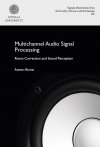Why do you think that a limited PEQ can match your target in a room better than a automatic approach with much higher resolution correction that does spatial averaging?
Because I start with the automatic PEQ and then run REW to see the current result. YPAO seems to subdue the bass response under 500 hz, but does a very good job over 500 hz. My Yamaha has a copy option, so I just take the YPAO measurement, copy it, and adjust the bass region until my REW results match my target curve.
I think Gene and others on AH who did the same way you did, also reported good results. In my opinion it is a logical approach. It seems to me the process of such manual tweak after an auto run is like a using the negative feedback technique in a control system. For example an amplifier is designed to amplify the input signal without distortions, but when measured, we see distortions, so we add a feedback loop to correct.
Same idea with REQ, YPAO, Audyssey may be designed to EQ a range flat, but when measured it was found not flat, so we edit the curve such as if we same bump of 5 dB at 60 Hz, we apply a cut of 5 dB to correct the bump to 0 dB, in this way the edited target curve would be non flat, as the curve would now show a dip instead of a bump, but the output curve would be flat.
So it really is not a case of manual vs auto, but more like with feedback vs no feedback. In this case it is not a feedback loop because unlike that used in the amplifier example, the feedback in the form of the manual PEQ tweak is not a continuous process. It is sort of one off, then we can measure again and may tweak with PEQ the second time, and can repeat the process multiple time, approaching a feedback loop approach, until we stop..
All these are just my own "theory", or actually "imagination" would be a better word, though it sounds logical to me.


